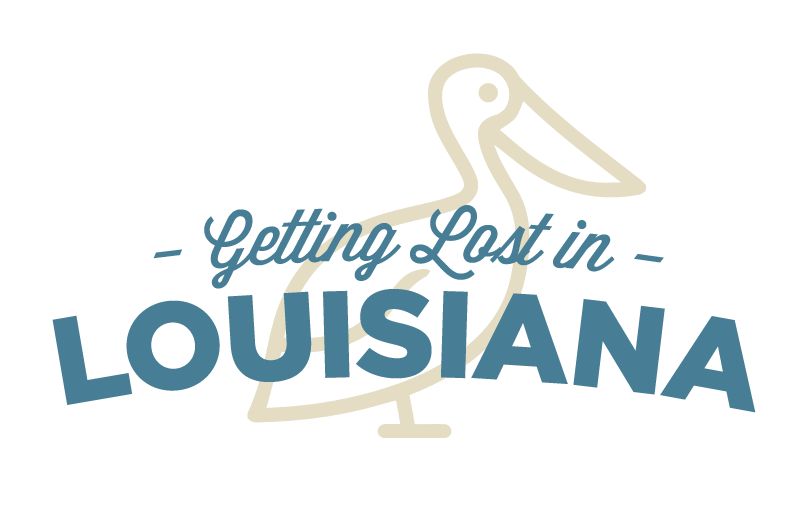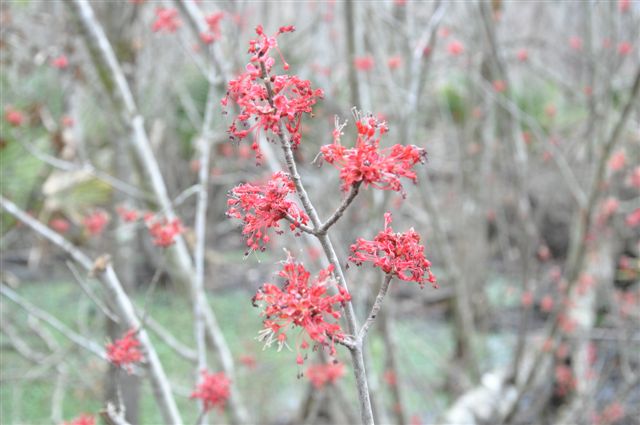Stifled from days of cold weather (40 degrees is frigid for New Orleans!), we took advantage of a warm spell and ventured out of the city to Jean Lafitte National Park.
The park proved to be an ideal location to take two small children. We started off in the visitor’s center, where my nearly three-year-old was fascinated by the life-like, stuffed animals–especially the owl peering down at him from the tree and the armadillo trying to hide out of view.
Outside on the trails, he ran freely down long lengths of boardwalks, prodded along by the hope of seeing an alligator or snake. Even though the alligators were hibernating, there were still signs of life throughout the area, including a baby raccoon foraging in the underbrush. Meanwhile, our baby had the best sleep in days, wrapped up snugly in his Moby Wrap, enjoying the swaying motion of my walk.
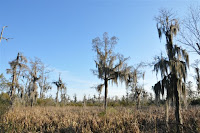 |
| Cypress trees covered in moss. |
While my husband snapped away with the camera, I found that the stress of the work week slid away with each step we took farther into the swamp. Winter is my favorite time to visit Jean Lafitte. The relatively small crowds give you complete ownership of the area, and the crisp air frightens away the multitudes of bugs that try to carry you off in the summer. The cypress trees, laden with moss, are particularly haunting against the blue sky, while the waist-high palmettos entrance you with their gentle swaying in the breeze.
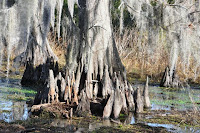 |
| Cypress knees |
There are several trails at the National Park, some on land through swampland and forest and others on water, beckoning exploration with a canoe. One of my favorites is the Bayou Coquille trail, which begins in a hardwood forest and descends through palmettos and bald cypress trees to a freshwater marsh. Here, you can continue on to the Marsh Overlook trail, which offers some of the best views of wildlife in warmer weather and gives a glimpse into the logging taking place here in the 1800s.
Because Jean Lafitte is so easily accessible from New Orleans, I never feel the need to explore every inch of the park in one visit. If I miss something today, I can always find it next time. Thus, after a nice hike along the Palmetto Trail, we climbed back in the car and headed a short distance to where Lafitte Parkway dead ends in the town of Jean Lafitte.
 |
| Shrimp boats in Jean Lafitte |
A fishing village outside of the protective levee system, Jean Lafitte always surprises me with its beautiful homes high up on piers. Not your typical fishing camps, this town hosts year-round residents who make their livings off of the Gulf waters that crisscross the land through their backyards.
The town’s namesake, the notorious pirate Jean Lafitte, ran a smuggling outfit based in Barataria Bay to the south. A privateer in the early 19th century, Lafitte gained fame–and a pardon–after his efforts to help General Andrew Jackson win the Battle of New Orleans during the War of 1812.
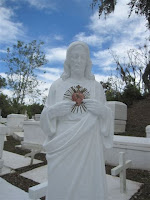 |
||
| Cemetery in Jean Lafitte |
Jean Lafitte (the town) hides many secrets just steps away from the main road, like the whitewashed cemetery overlooking serene Bayou Barataria. Today we discovered another quiet walk at the end of City Park Drive behind the newly built Multi-Purpose Center. The exercise helped us feel better about the gumbo and fried fish we had just eaten at Boutte’s restaurant, where an empty upstairs dining room sheltered the other patrons from our lively children. We were the only ones out there on the trail that day, a fact I was thankful for when my potty-training toddler discovered the wonderment of peeing on a tree.
As we drove away that afternoon, a brown pelican unfurled its massive wings and took flight, skimming the bayou’s waters underneath. It was an image we all carried with us as we drove up the ramp to the Westbank Expressway and saw the city’s skyline on the other side of the Mississippi River.
